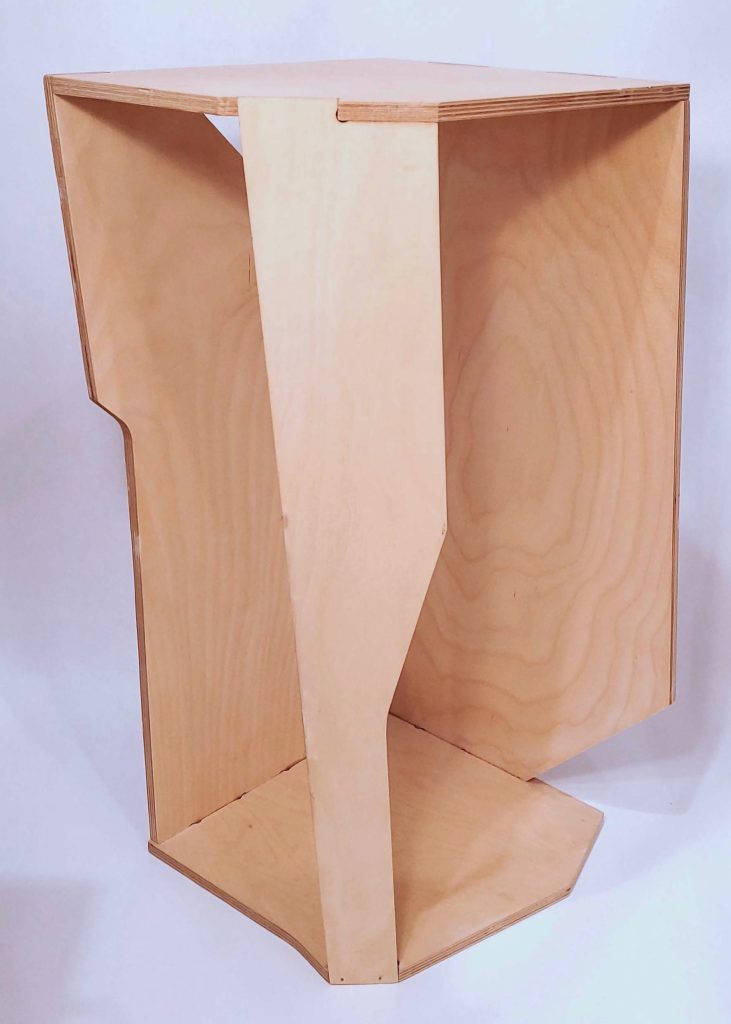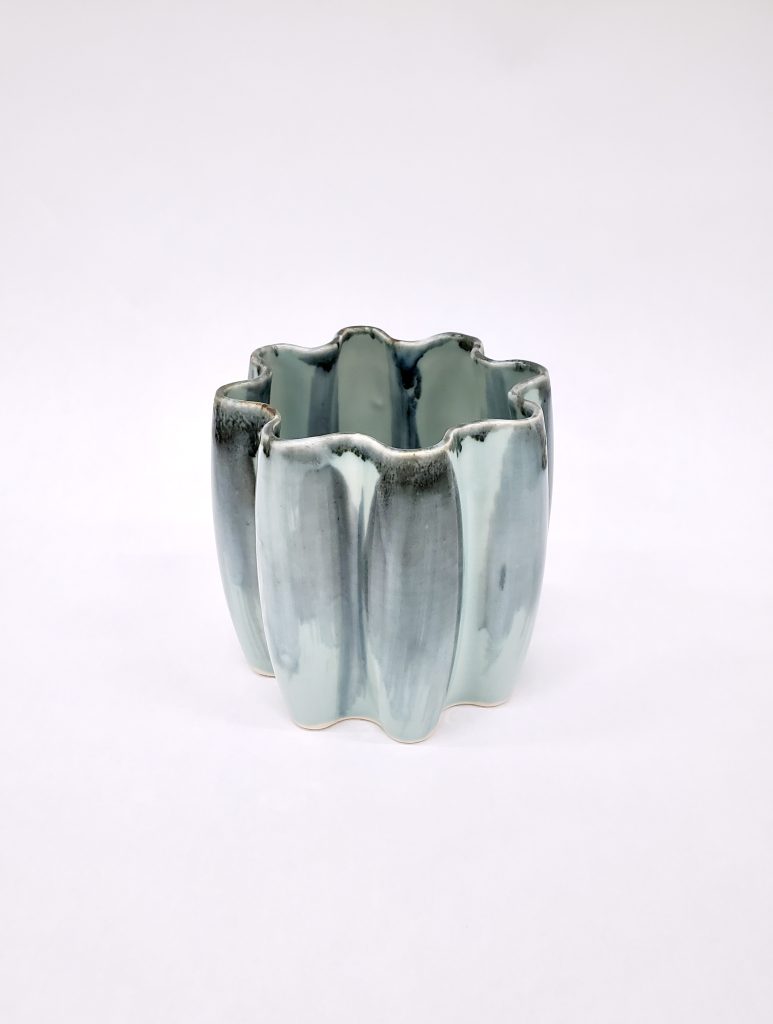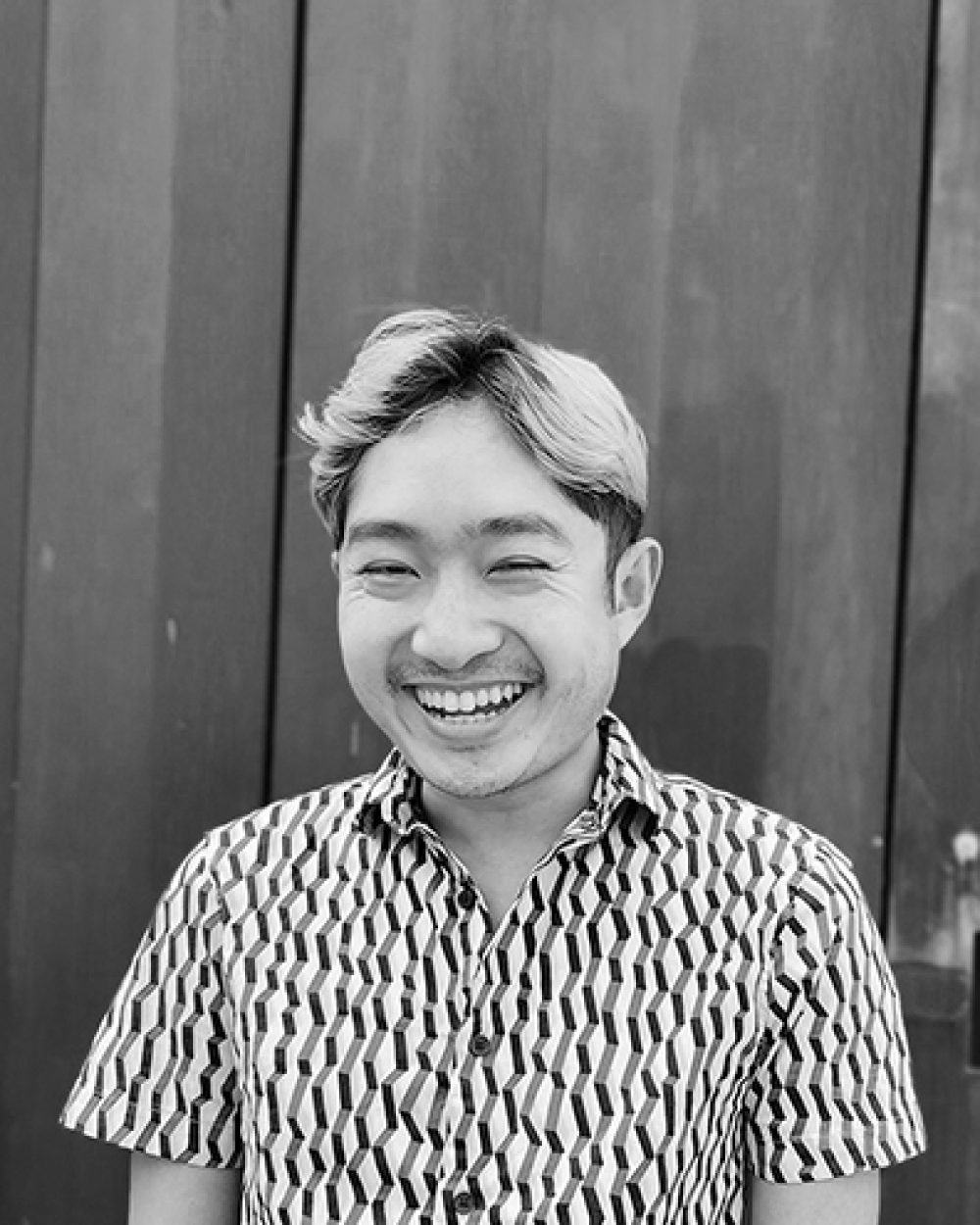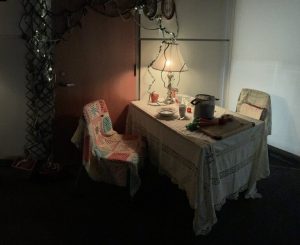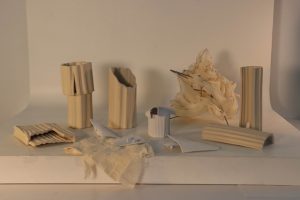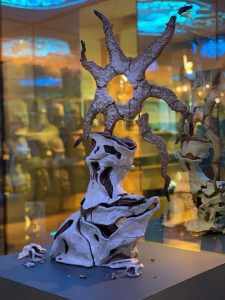The Party’s Over
Cory Yeung
See it On Campus: Level 2
Visitor InfoWhen entering from the main entrance, walk straight towards the statue of Emily Carr on her horse. It is just outside the Reliance Theatre's upper level on the 2nd floor. If entering from the 1st floor, head to the 2nd floor and find the Reliance Theatre.
ECU Award Recipient
Judith Warren Painting Award – Winner
Installation
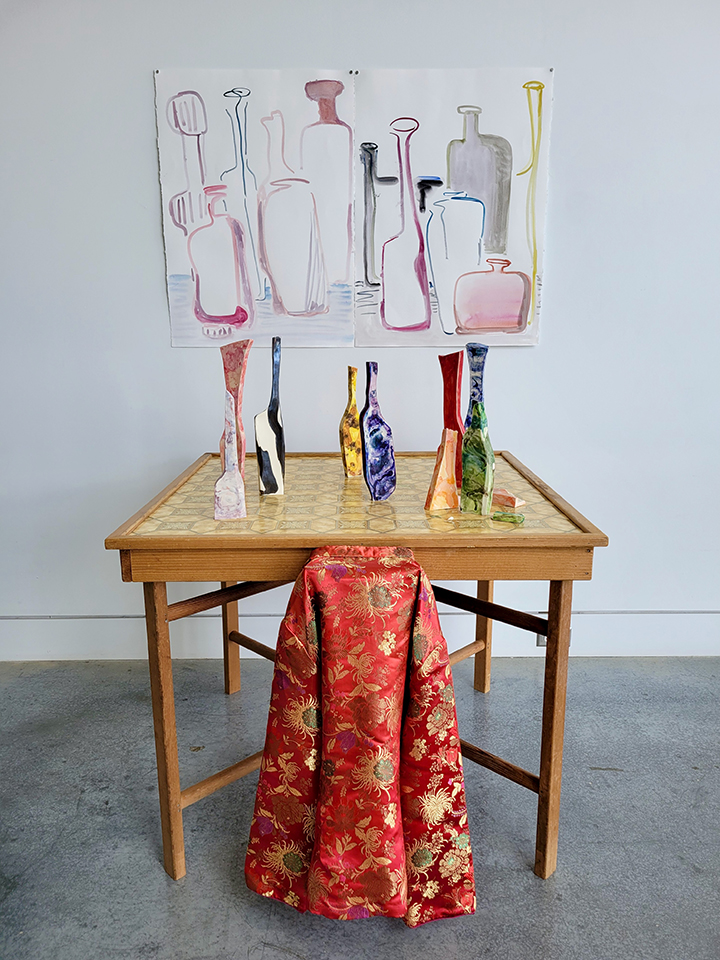
The Party’s Over – installation view(2023) ceramics, ready-made mahjong table, tangzhung garment, 46″ H x 36″ W x 36″ D
Bodies – (2023) watercolour paint, paper, 1 diptych, 30″ H x 44″ W
Through ceramic sculpture, watercolour drawings, and ready-made objects, Yeung explores themes of family, vulnerability, and the queer coming-of-age journey. His latest work, The Party’s Over (2023) is a celebration of the queer experience, clothed within the complexities of the Chinese diasporic identity. The work is an abstract representation of Chinese ceramic forms, utilizing a queer colour-coded surface to convey this hybrid identity. Paired with a Tangzhung, a traditional Chinese brocade garment, and familiar domestic furniture, Yeung’s work invites viewers to reflect upon their own journey.
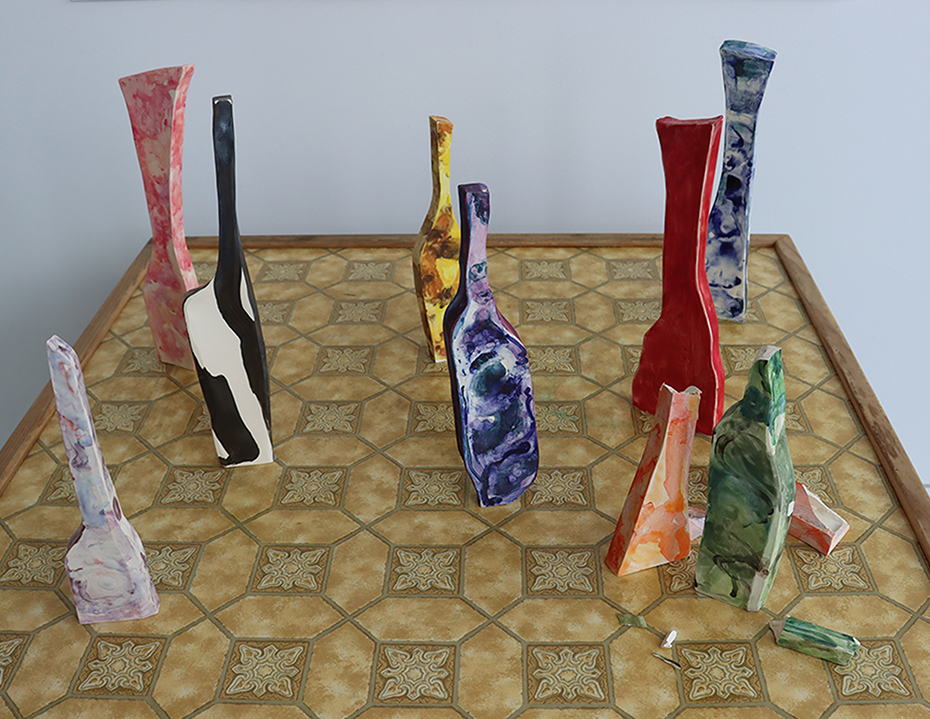
Ceramics
Memory of a Vase – (2022) ceramics, newsprint, 16″ H x 4″ W x 2.5″ D
Through the medium of ceramic sculpture, Yeung explores themes of a hybrid Chinese Canadian identity within the Chinese diaspora. An abstract representation of a Chinese ‘sanxianping’ or ‘three string vase’ from the Kangxi reign, Yeung reinterprets a rare Chinese form with a traditional blue and white palette. His painterly style is informed by the New Ink movement of Hong Kong and Abstract Expressionism, linking the East and West seamlessly. The notion of a flat silhouette of a vase means the function of this object is no longer of a ceramic vessel, rather a representation of the metamorphosis one takes as one culture melds into the Western lens. The apparent ‘loss’ of meaning within the decoration is reformed by abstract calligraphy-like gestures, exhibiting the muscle memory that innately comes from cultural osmosis Yeung had with his grandparents. With a Chinese newsprint support behind, this work also reflects on how the arts and culture have always come to support one in another in keeping cultural knowledge and education alive.
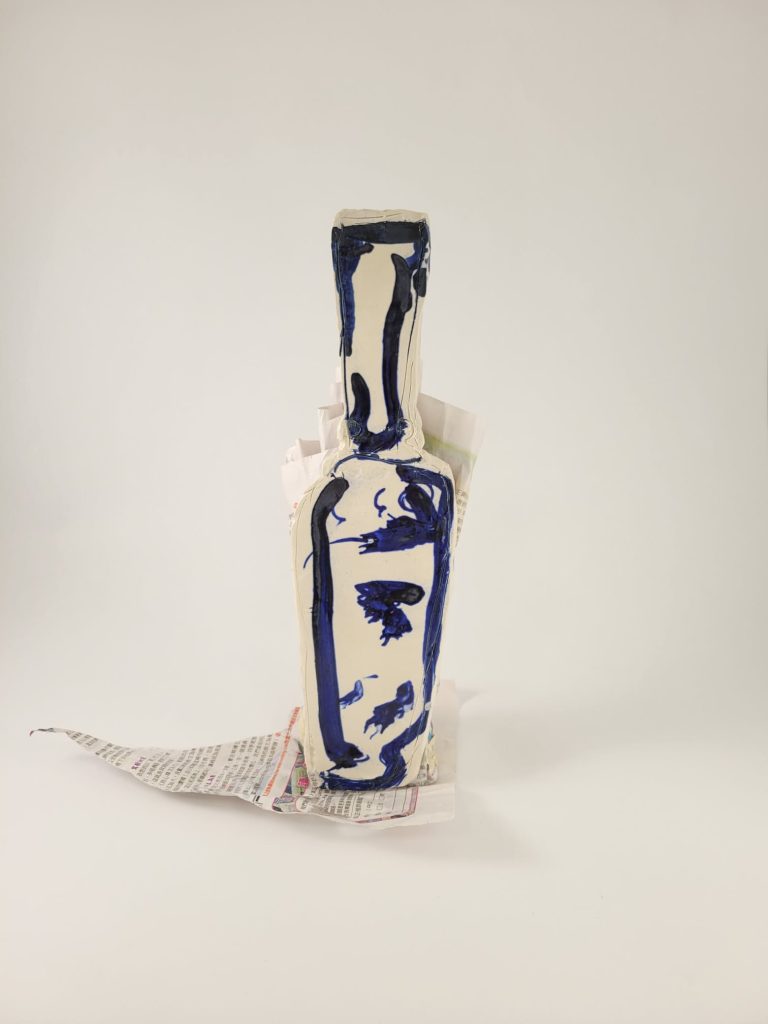
Chinese Banquet Series – (2021) ready-made ceramics, decals, 14 3″ x 3″ bowls, 6″ x 4″ plate
Cory Yeung’s Chinese Banquet Series (2021) focuses on the ongoing inequality found within the value Canadian society has placed on Chinese cuisine and community at large. Rooted in the racist laws that forbade Chinese migrants from professional careers, many immigrants pivoted to restaurants throughout Canada during the 19th and 20th centuries. As a way to placate to Canadian taste, many hardworking owners and chefs intentionally devalued their cuisine, lowering prices, allowing the general public to believe Chinese cuisine was unhealthy and of lower standards than European counterparts. Within Yeung’s series of ready-made rice bowls and plate, he points to these inequalities in the value of Chinese food found within Canada. By applying decals, Yeung layers his interpretation of what authentic Chinese food is, with questions and statements left for viewers to ponder whilst peering into these domestic objects. The use of affordable Made in China ready-made tableware represent the numbers of innovations and sacrifices Chinese people have had to make in order to be accepted at the table. Utilizing food to represent the continued xenophobic tendencies against the Chinese, the wares assert our stance as a valuable cuisine and community within the Canadian culture.
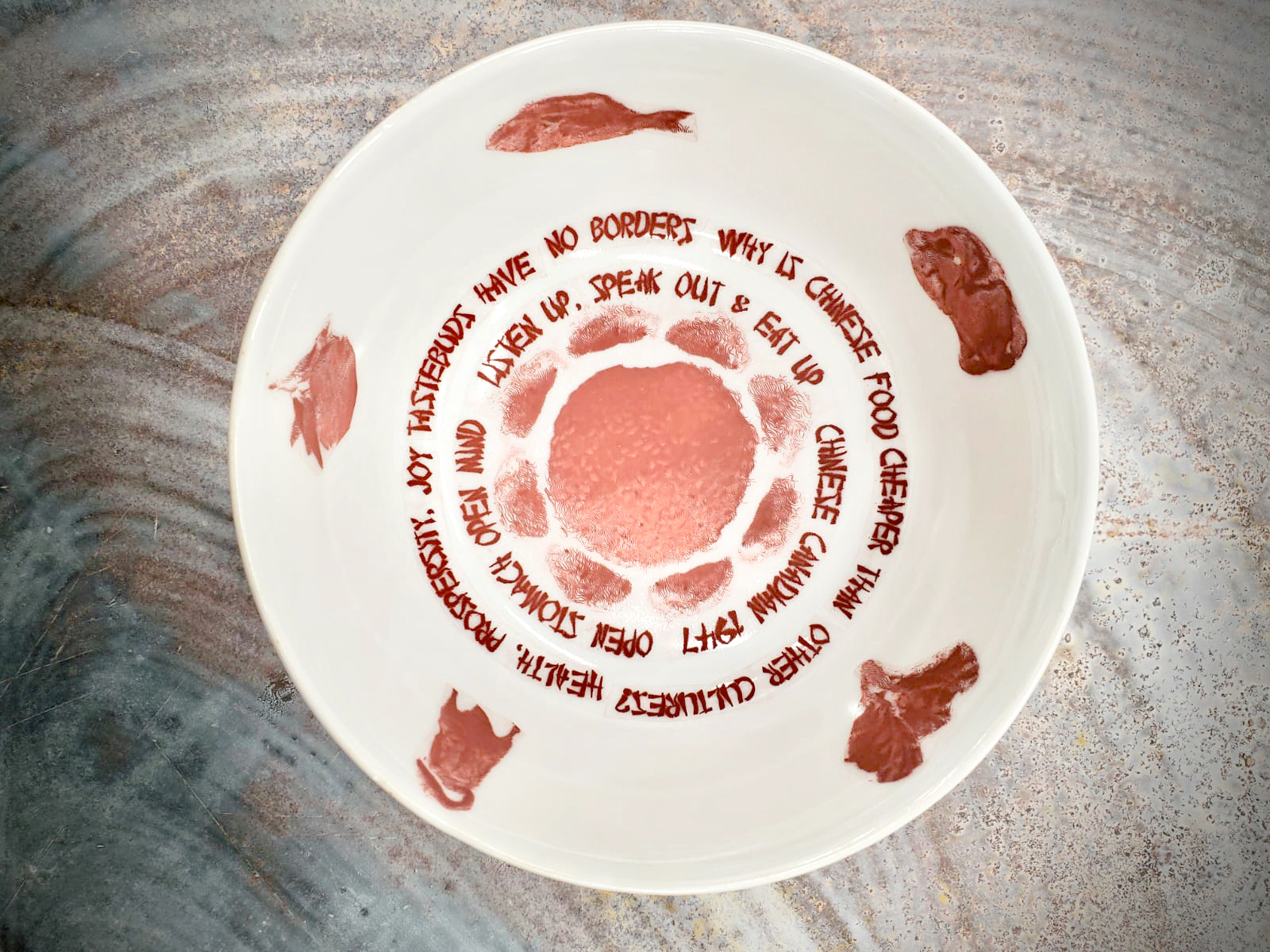
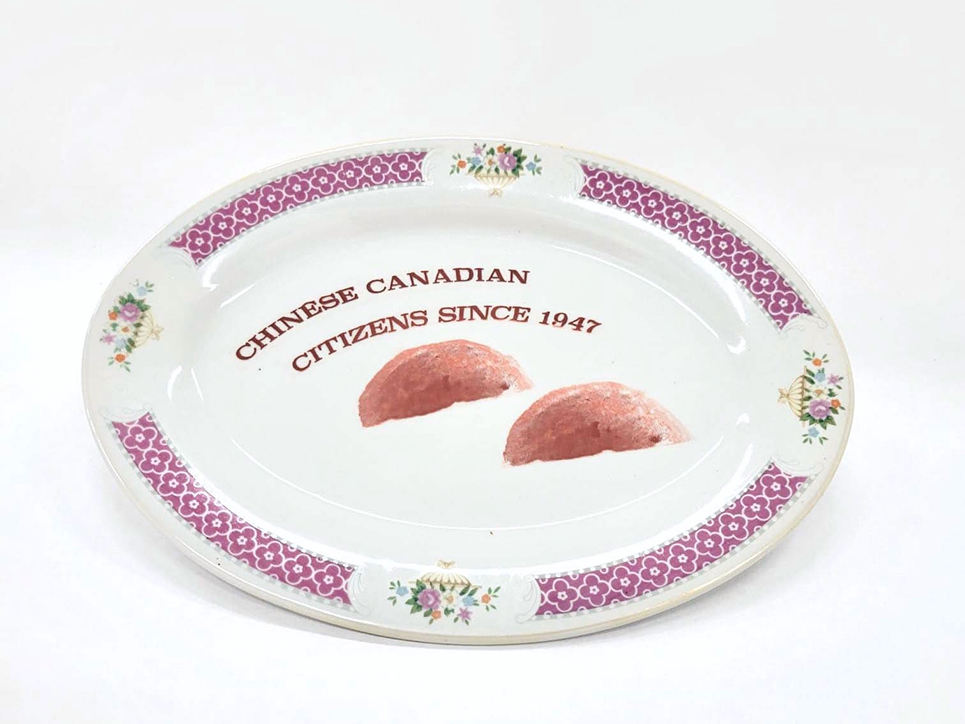
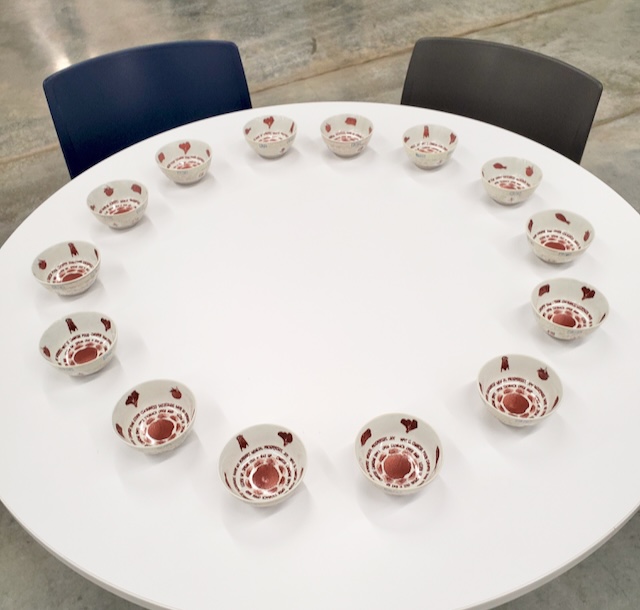
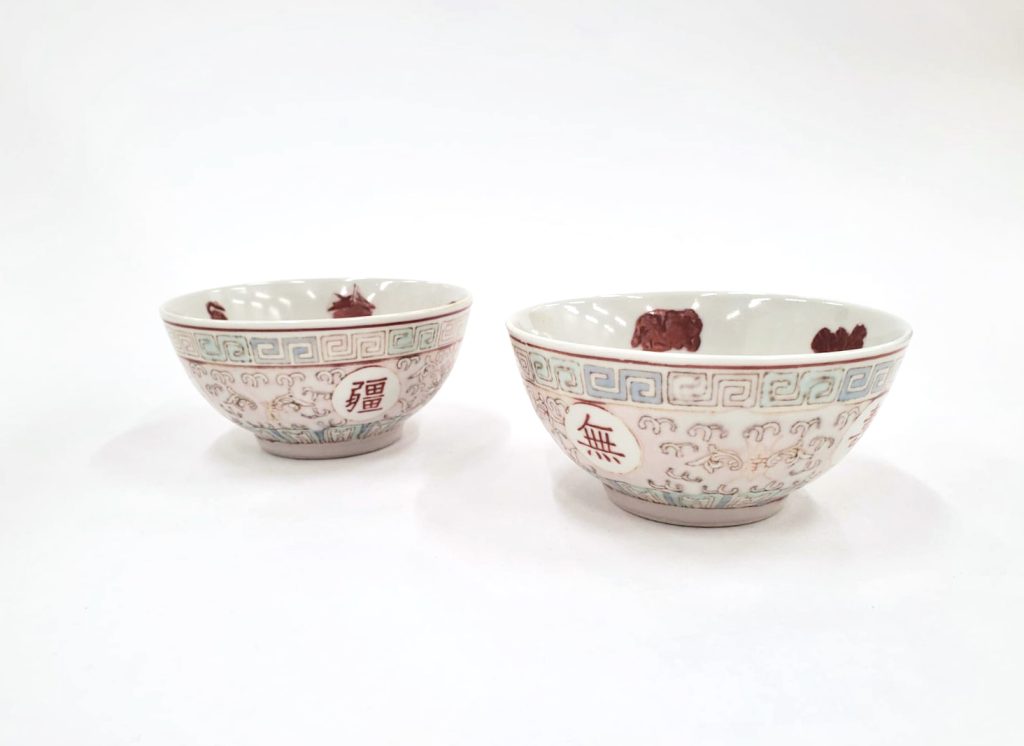
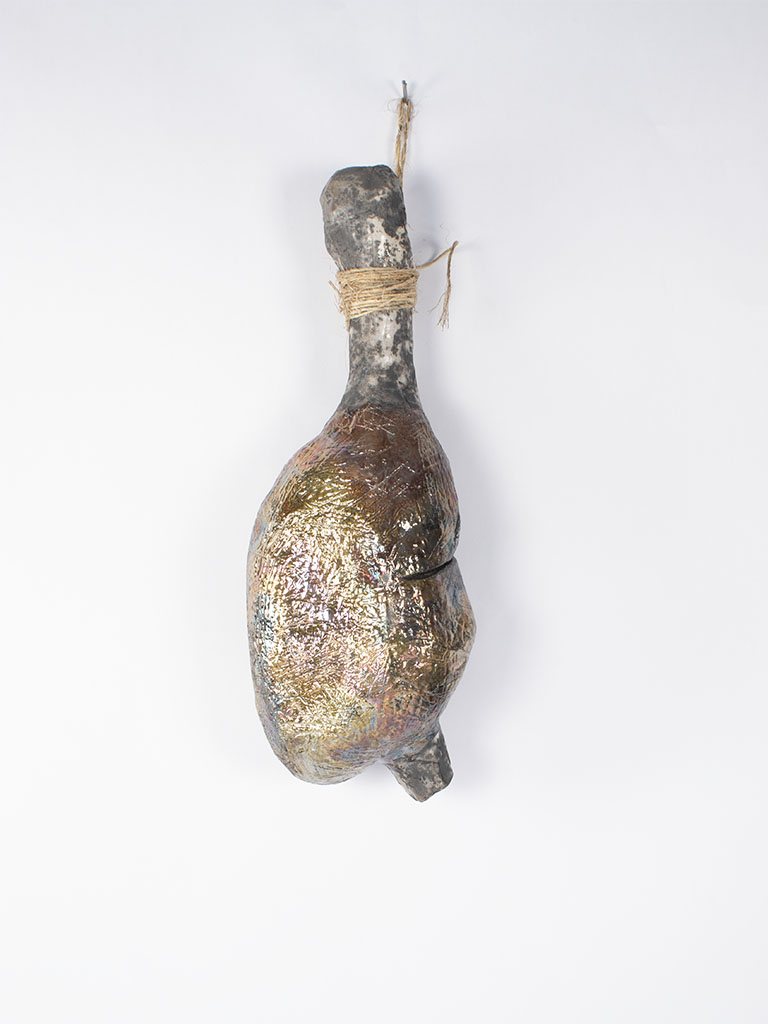
Ham – (2019) raku fired ceramic, twine string, 16″ H x 6″ W x 5″ D
Part of a group sculpture, Ham (2019) represents the thigh of a human body. Yeung approached his brief with a sense of humour and playfulness. Working within the ceramic tradtion of trompe l’oeil, Yeung mimics Jamón ibérico. The contrast between this sculpture and the body part it represents alludes to the reality of the mortality, consumption and mans influence on environmental concerns. This is further reflected on the oil slick glaze upon the flesh of the ham.
Watercolour
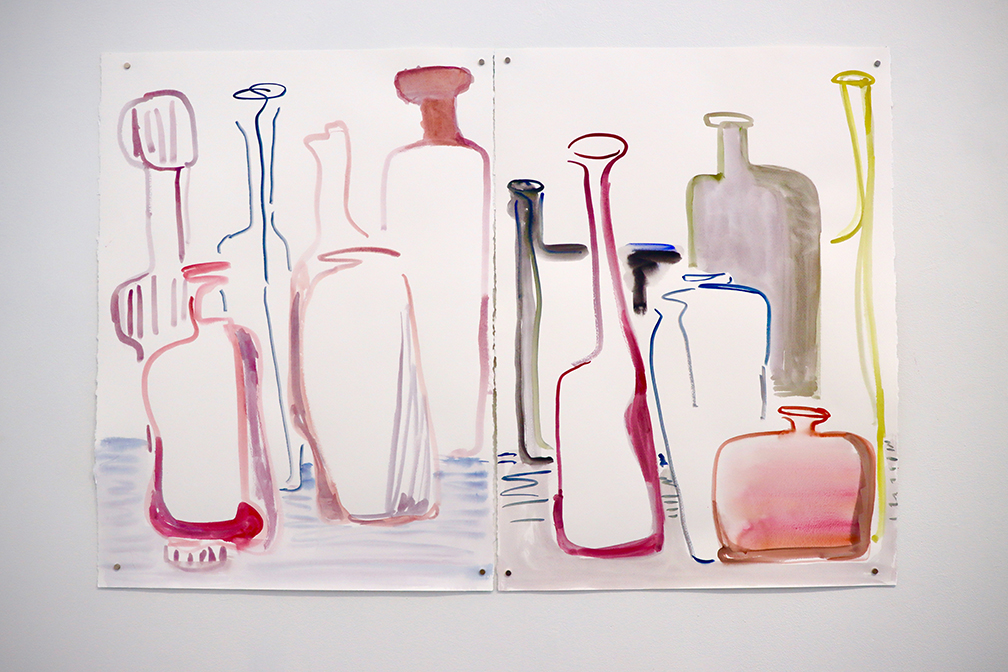
Bodies – (2023) watercolour paint, paper, 3 diptychs, 30″ H x 44″ W
Bodies (2023) is part of a series of watercolour diptychs. The forms found within the still life studies mimic crowds of bodies. As one continues viewing the progression of watercolours, one sees the metamorphosis of these into more abstract objects. However, they are rooted in the ceramic vessel, which has many elements named after the body: the lip, neck, shoulder, body, foot, volume, breath, etc. These vessels stand in for the intimacy of the human form, thereby allowing the viewer to be embraced by these objects without judgment.
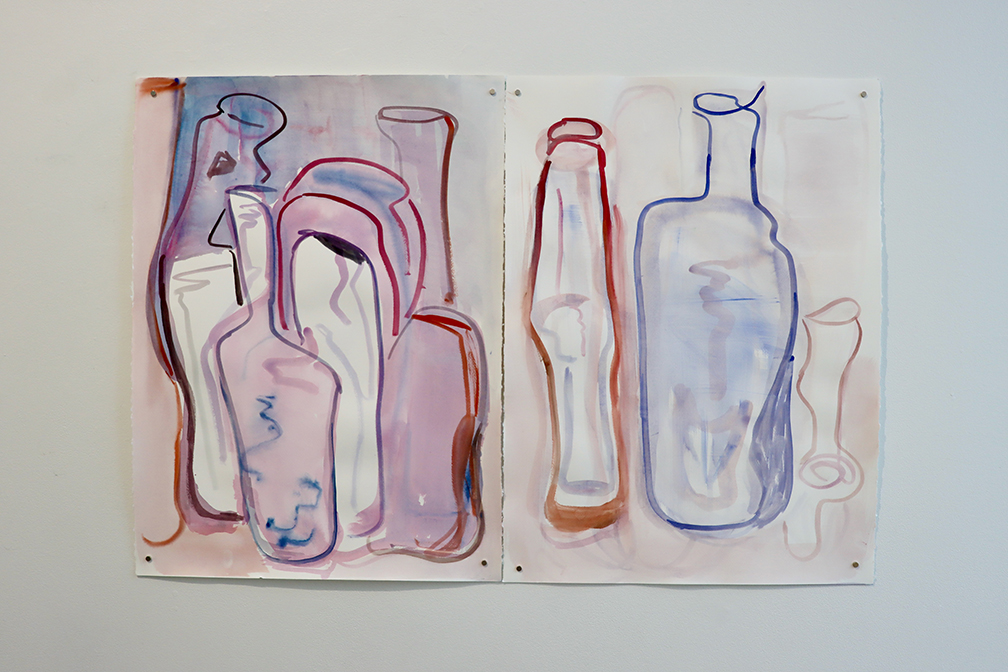

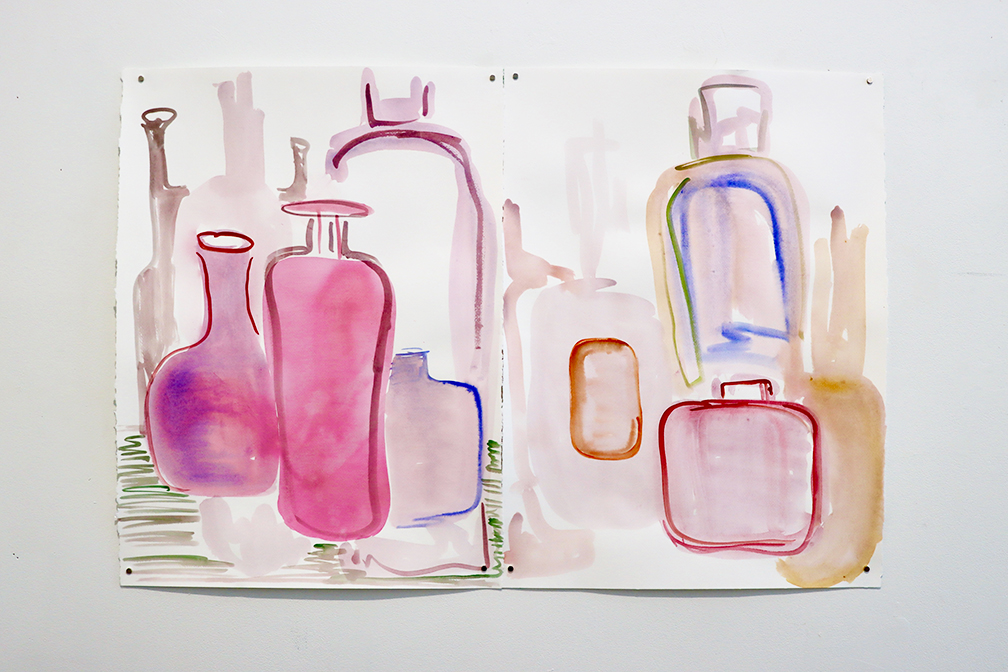
Blue & Pink Studies – (2022) serigraph monoprints, 20 prints 30″ H x 22″ W
A material exploration of serigraph print processes into the concept of gender colours and the various monoprints that resulted.
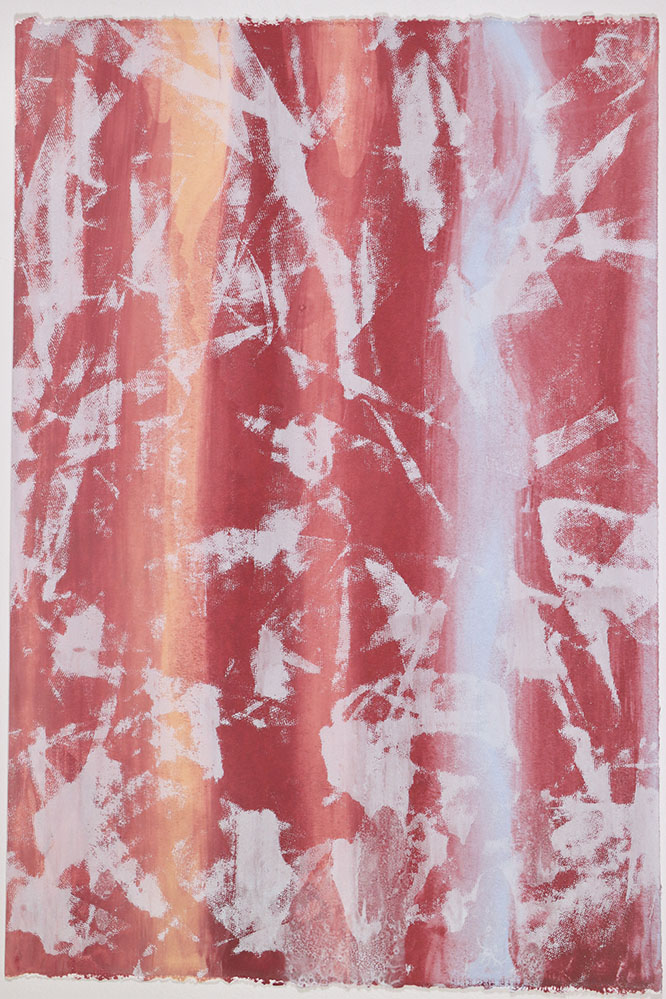
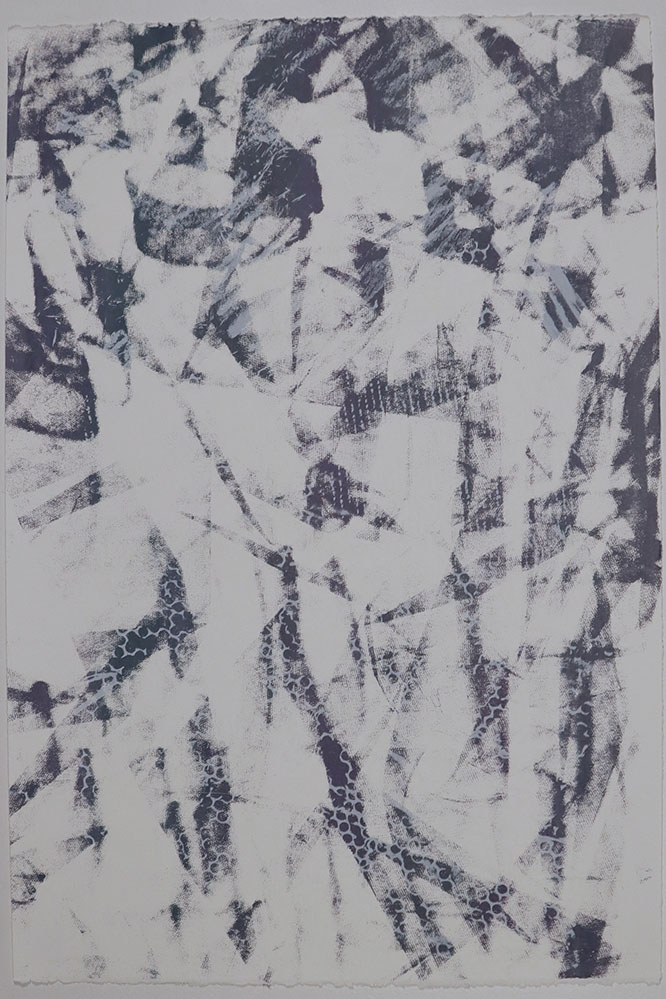
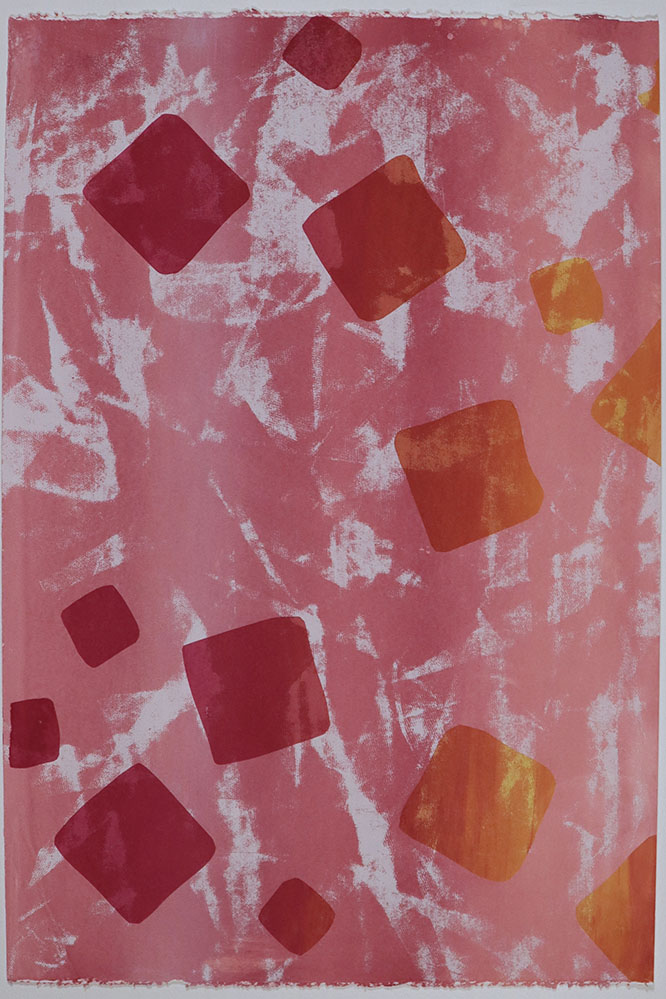
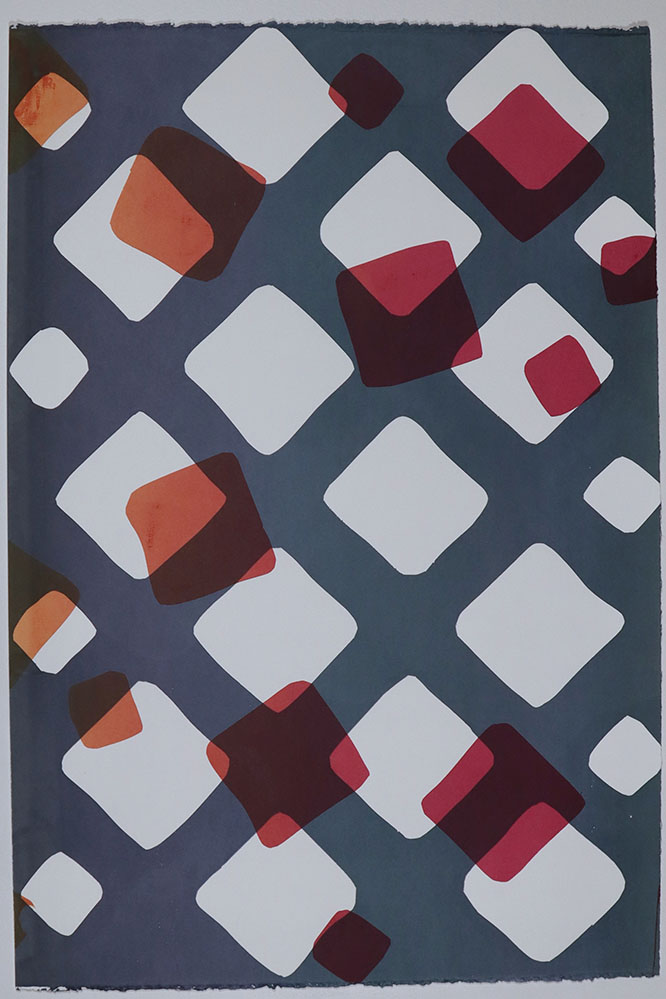
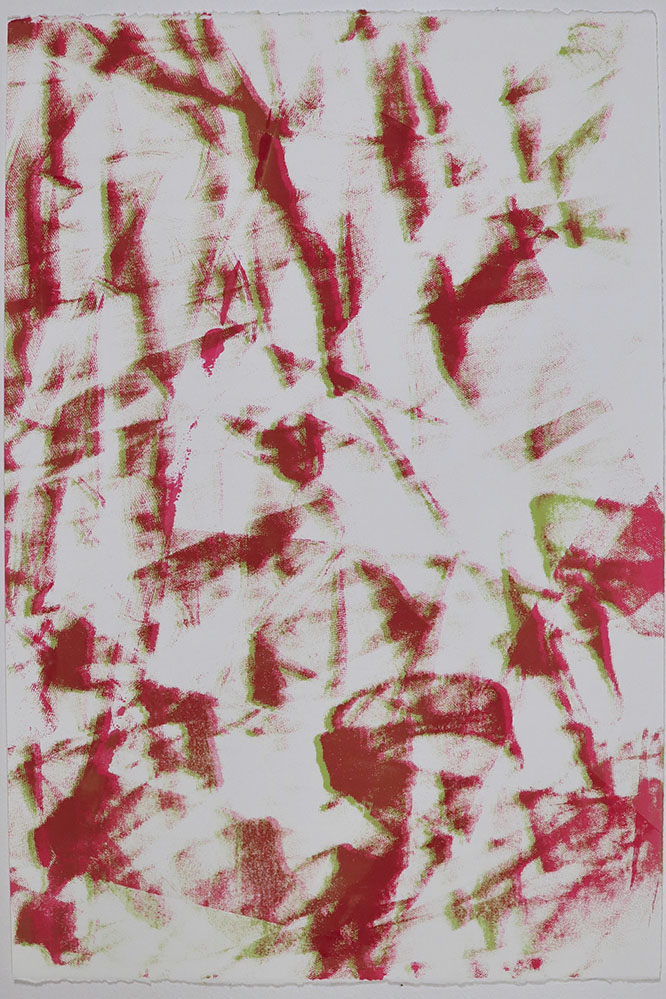
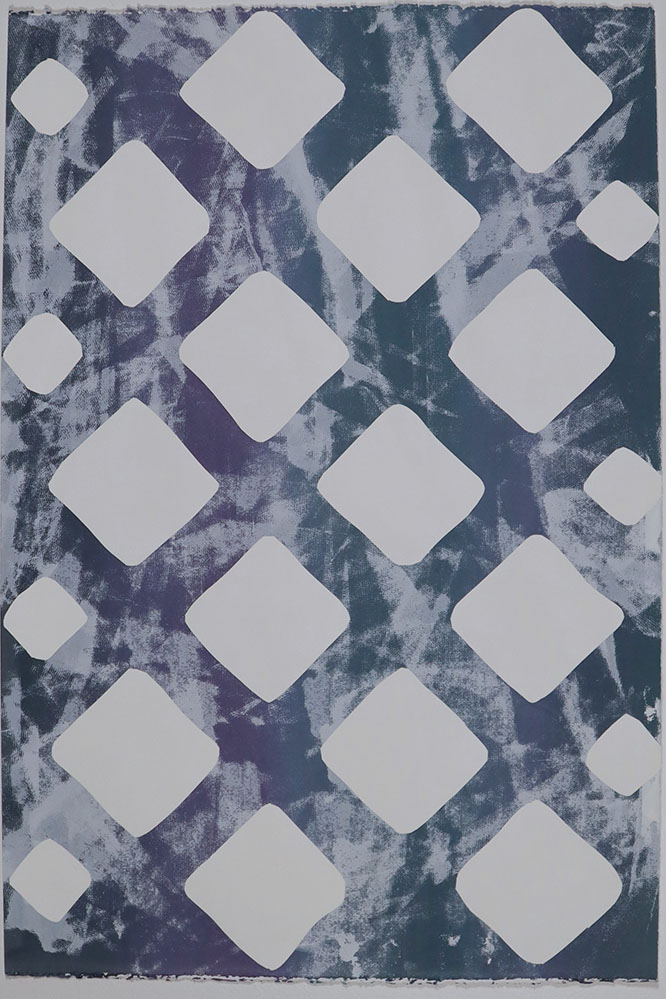
Additional Prints 15″ H x 10″ W
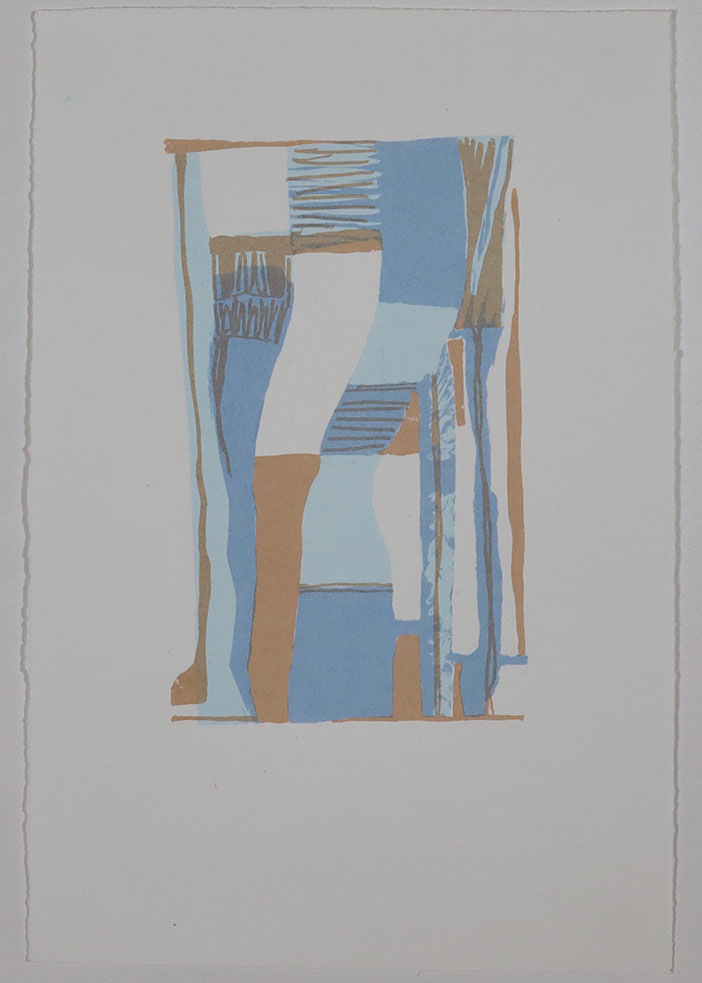
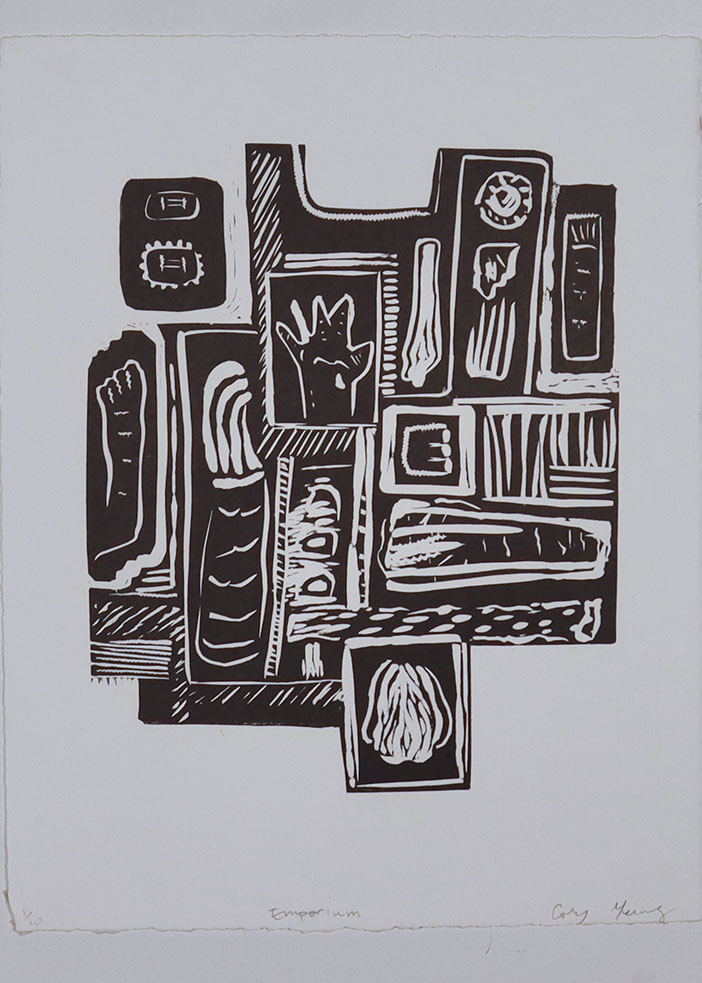
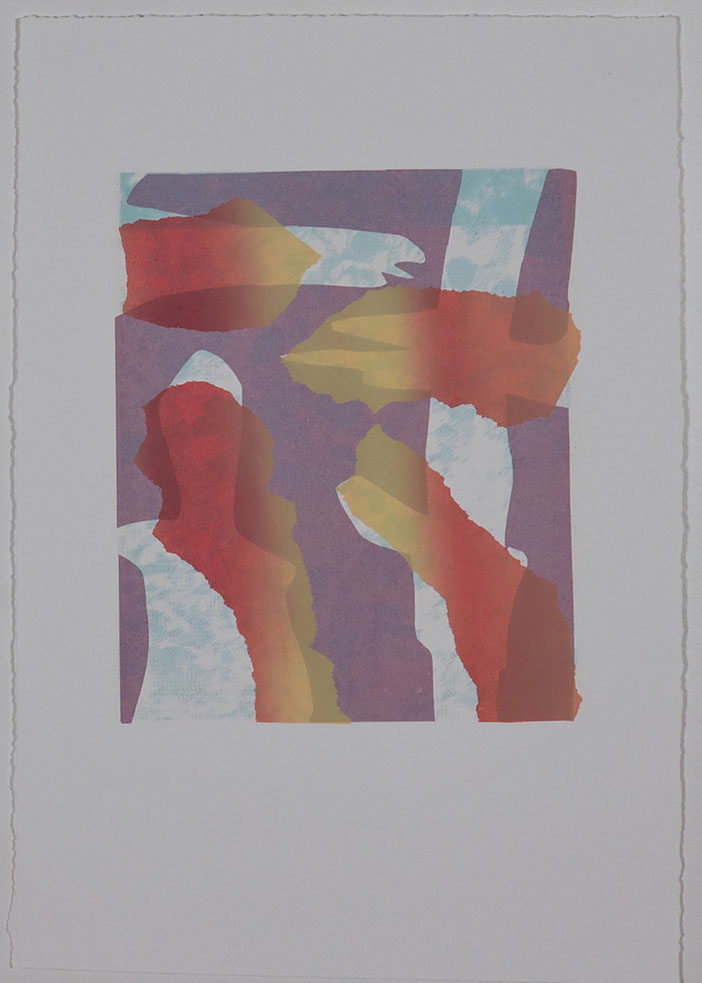
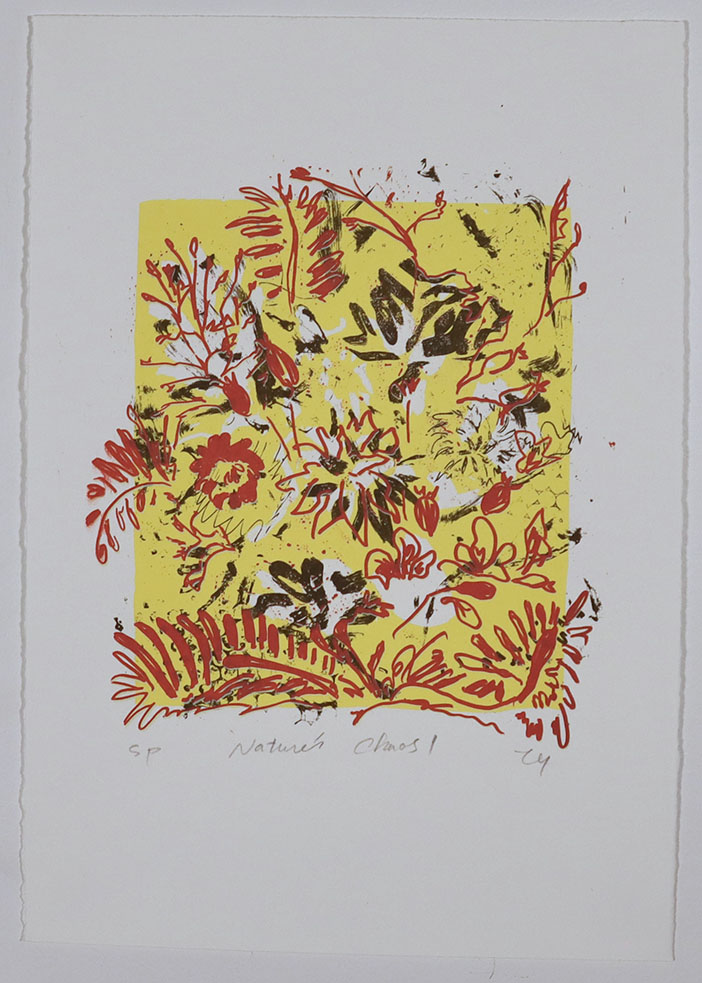
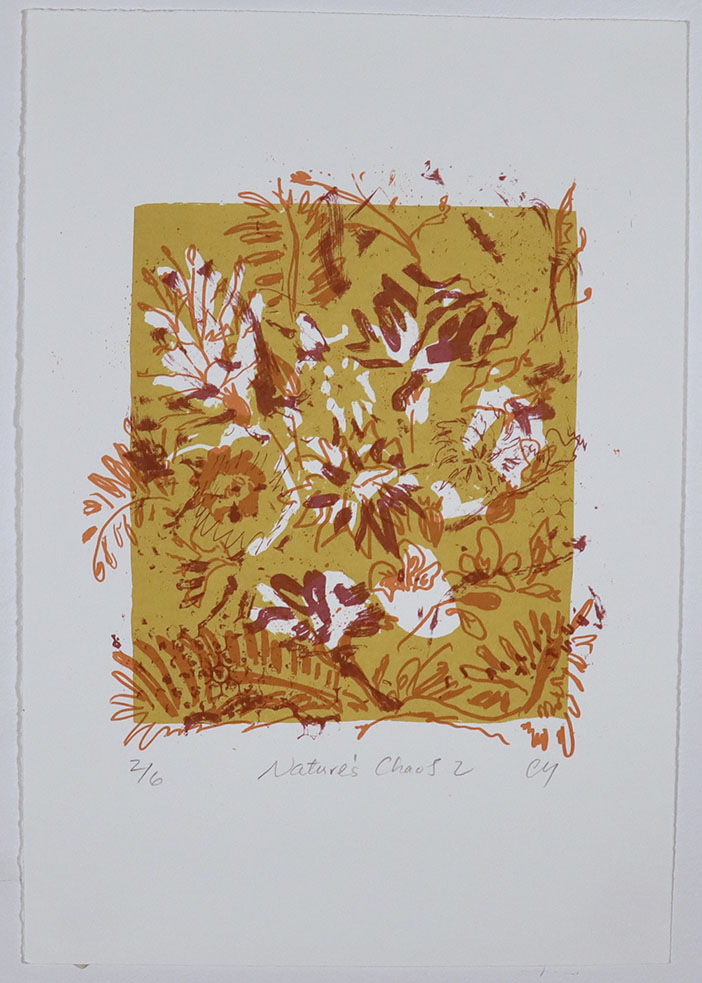
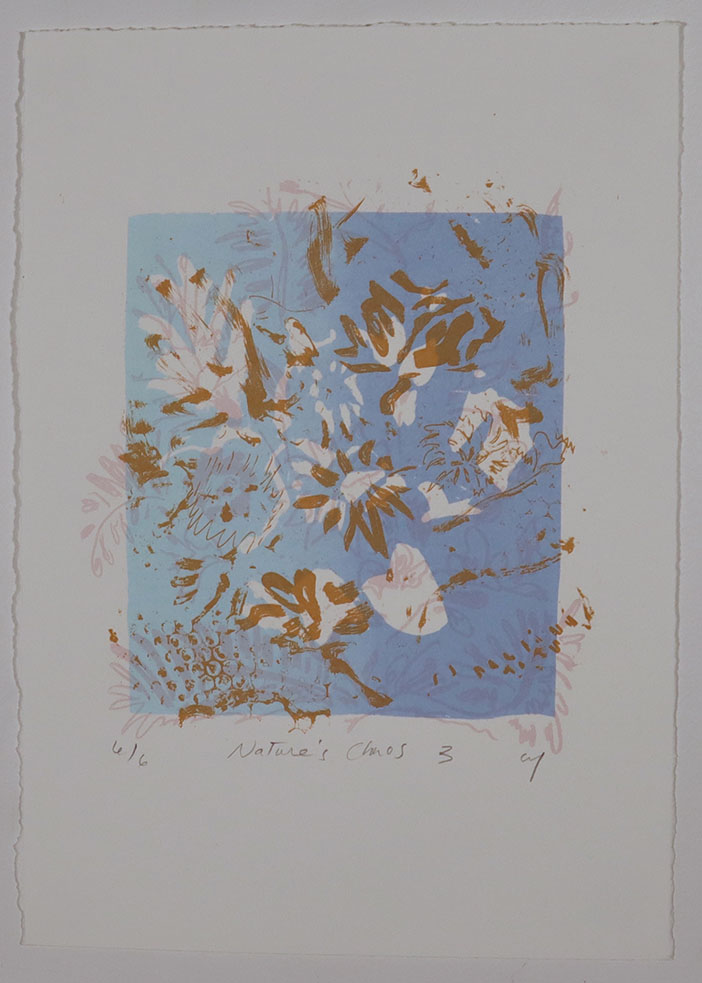
Sculpture
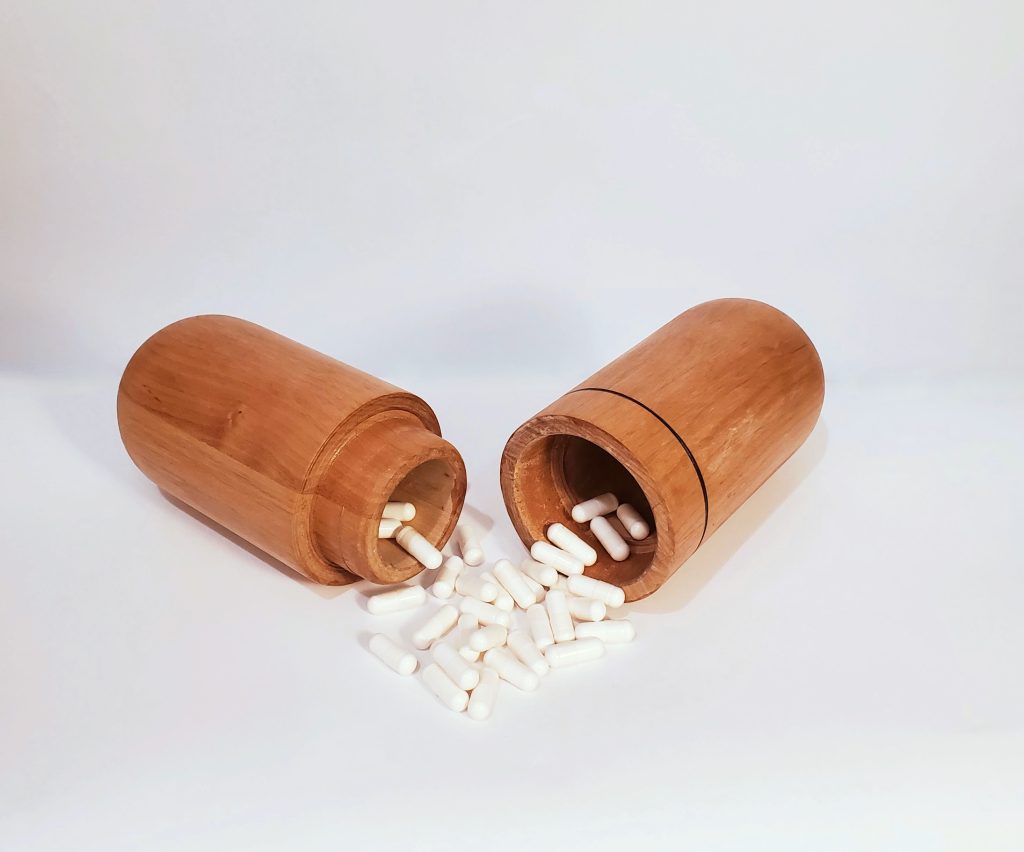
Untitled (Pillbox) – (2018) wood, capsules, 3.5″ D x 12″ W
Through the medium of mixed-media sculpture, Yeung explores themes of mental vulnerability and the inherent strength found from it. Untitled (Pillbox) 2021 observes how mental health is so dependent on ritual, in this case the habit of prescription medication. The classic capsule is a perfect shell for the complicated stigma surrounding mental health treatment. In essence, Yeung’s work speaks to a universal human experience for mental wellness and how treatment comes in many forms.
Product Design
Side Table – (2019) CNC routed plywood, 27″ H x 15″ W x 12″ D
Scallop Container (2022) slipcast ceramic, 5.5″ D x 6″ H
From a hybrid approach using 3D computer programming and the handmade, these two objects were digitally designed before being made into tangible objects. With the Side Table (2019) the file was CNC routed onto plywood planks before hand assembling the pieces together. Similarly, the Scallop Container (2022) was designed using 3D programming, 3D printed in plastic, which was then made into a mould before being slipcast. This marriage of digital and traditional methods provide a refined approach to these domestic products.
